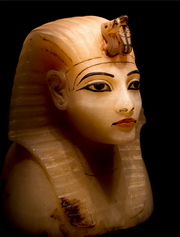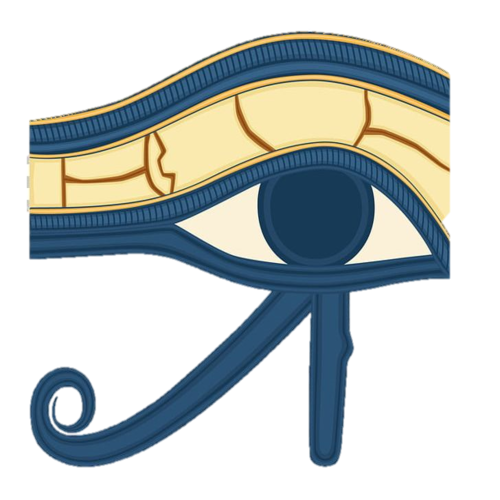
Caesarion wearing a nemes crown

Tutankhamun wearing a Nemes crown, from a Canopic Jar
The nemes is the striped head cloth worn by pharaohs in ancient Egypt. It covered the whole crown and back of the head and nape of the neck (sometimes also extending a little way down the back) and had two large flaps which hung down behind the ears and in front of both shoulders. It was sometimes combined with the Double-Crown, as it is on the statues of Ramesses II at Abu Simbel. The earliest depiction of the nemes, along with a uraeus, is the ivory label of Den from the 1st Dynasty. It is not a crown in itself, but still symbolizes the pharaoh's power.

Nemes Headress with uraeus
The nemes headdress, attested from the time of Djoser in the early 3rd Dynasty, is worn almost exclusively by the king in representations. Its use on the standards representing the royal Ka underlines its significance for kingship. Beginning with the 18th Dynasty, it is depicted mostly in combination with other crowns. It appears to be referred to by the term nws in the Pyramid Texts and is associated with Re-Khepri at sunrise. Another close link is with Horus, who is said in the Coffin Texts to bestow this headdress on his father Osiris in order to bring about the latter's rebirth. The king wears the nemes when represented as a sphinx or falcon. It seems to express the royal "Horus" and "Son of Ra" names.
